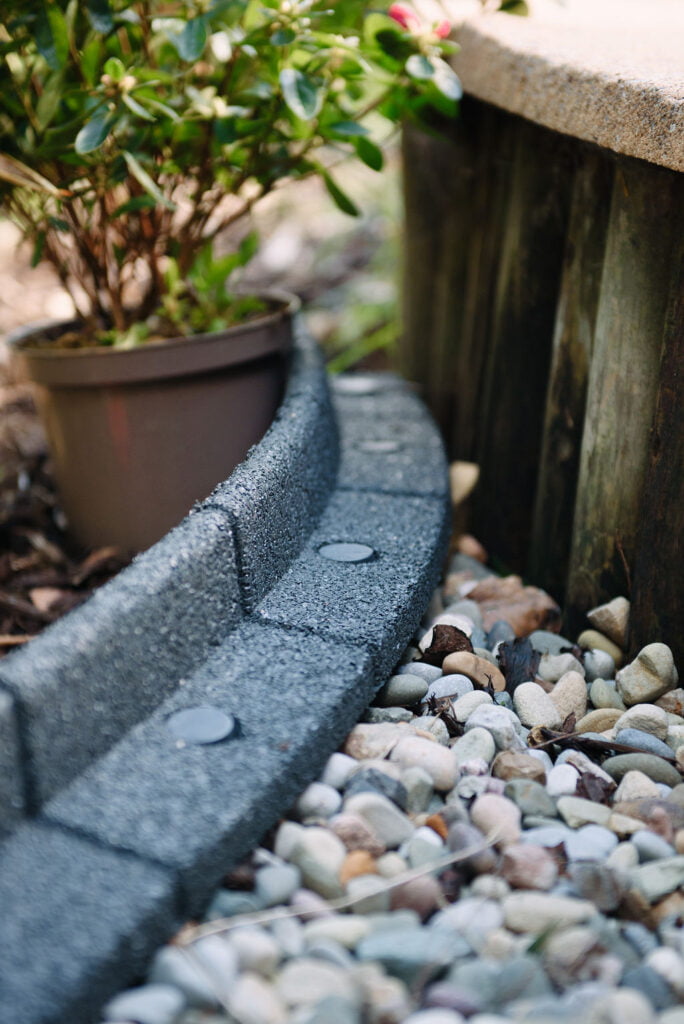Garden edging is used to line and shape areas of your outdoor space including flowerbeds, paths, and lawns. This is a practical and aesthetic way to define areas of the garden, while also reducing maintenance requirements. But what are the benefits of garden edging for sloped and uneven gardens? And why should you consider edging for your sloped garden?
So what are the benefits of garden edging for sloped and uneven gardens?
Garden edging can bring a number of benefits and advantages for any outdoor space, including those that are sloped and uneven. These benefits include:
- Preventing soil erosion
- Controlling water run off
- Improving garden structure
- Improving safety
- Improving plant health

Preventing soil erosion in sloped gardens with garden edging
One of the most common problems for any sloped or uneven garden is that this can experience soil erosion. Rainwater naturally runs downhill, and this will move soil along with it, pushing this downhill too. As a result, topsoil can be lost in certain areas of your garden, which will also lead to damage to plant roots. Garden edging can be a good solution for this as it will act as a barrier, retaining the soil exactly where this is needed. For example, by installing edging along the contours of the slope, you can create mini terraces that slow down water flow and reduce the chance of soil being washed away. Flexible garden edging like FlexiBorder can be the perfect option for this, as it can follow the slopes and uneven surfaces, bending and curving to fit the terrain.
Garden edging can help to control water runoff for sloped gardens
In an uneven garden, managing water is crucial to avoid pooling and flooding. Without proper control, rainwater may gather in unwanted areas, damaging plants or hard landscaping. The right garden edging can be an effective solution for this. This is because edging can direct water to where it’s most needed, or guide it safely away from sensitive parts of the garden. It works well in combination with drainage systems or gravel paths to encourage effective water dispersion. Using edging in conjunction with planting beds also helps ensure water is absorbed by the soil rather than flowing away.
Improving garden structure and accessibility with garden edging
Another common issue with a sloped garden is that this can be difficult to organise, as uneven surfaces make it hard to create a space that can easily be defined. Garden edging can help with this, bringing an aesthetic benefit to your garden. With the right garden edging, like FlexiBorder, you will be able to create clear lines between lawns, flower beds, and pathways, making the garden feel more structured and deliberate. This is particularly helpful when designing raised beds or tiered sections, which are common solutions for sloped gardens. Well defined areas are also easier to access and maintain, reducing the need to walk on fragile soil or disturb plant roots.
Using garden edging to support plant health
As discussed above, in sloped gardens water and nutrients can flow away too quickly for plants to absorb them. By creating separate beds with edging, you can slow down this process and create micro-environments that are better suited to healthy plant growth. Effective edging like FlexiBorder also prevents grass and weeds from encroaching on flower beds, reducing competition for nutrients and making it easier to manage planting areas.
For garden edging that can truly transform your garden space, choose FlexiBorder. Why not take a look at our range of FlexiBorder options today?



